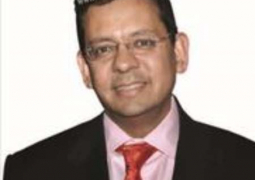The revolutionary life of the Guinea Bissau Liberation hero
Books in English on the revolutionary liberation war fought in Guinea Bissau from 1962 to 1974 are indeed rare, for the obvious reason of language interest, and the fact that it was a war fought largely out of the headlines in the Western Press. Indeed, except for the sterling coverage of Basil Davidson for the London press, or a few Communist journalists from the USSR and Romania, the war of liberation led by Amilcar Cabral against the hapless Portuguese oppressors raged on unnoticed by outsiders. In fact, Cabral epitomised and symbolised this war for independence. He formed the PAIGC which led the guerrilla war to a successful close in 1974, becoming its military then civilian leader, its philosopher and guide, its foremost exponent and intellectual.
This book by a leading scholar on Portuguese speaking Africa, Patrick Chabal, is an excellent biography of Cabral (1924-1973), and by extension, the story of the Guinea Bissau war of liberation. The writer starts his treatise with an outline of the history and trait of the Portuguese colonial rule in Africa; generally, it was the meanest, most cruel, most exploitative of all the colonial powers, even worse than the Belgians. It was an apartheid state through and through with the populations divided into Whites, Mullatos and Africans; Whites were the settlers from Portugal, the Mullatos were of mixed origins. With a certain degree of education, Africans, a few of them, in fact very few of them, can aspire to the civilado, then assimilado status, the latter being half White, (page 20). There was forced labor, and other forms of economic exploitation. In fact because Portugal was Europe's poorest colonial power, it could not afford to spare its African colonies any inch of possible exploitation. It was in such a harsh climate that Cabral was born in Bafata in 1924 of parents who were from Cape Verde, another impoverished Portuguese colony. As his father was a teacher, he endeavoured to give his son a good education. In 1945, he won a scholarship to study agronomy in Lisbon, and graduated to become the first university product from Guinea Portuguese as it was then called. This shows how backward the Portuguese colonialists had allowed the colony to remain in education. Like many other nationalist leaders, Cabral at first wanted to work, earn a salary and survive within the confines of colonial rule. But the penury, backwardness, maltreatment, taxation he came across while travelling round Guinea to make a census of trees and plants, made him to resign his cosy civil service job and dedicate his skills to fighting for the liberation of his people, by peaceful methods.
However, the massacre of 50 people in Bissau by Portuguese Police in August 1959, made Cabral move towards revolutionary struggle as he faced the fact that the brutal Portuguese behemoth could only hear the word of violence. In 1962, the PAIGC, formed in 1956 with CapeVerdian intellectuals like Aristides Pereria , started its armed struggle. Cabral was faced with enormous challenges, which were almost peculiar to him amongst all the other great African liberation fighters. First, his forces were mostly peasants from the Balanta, Pepel, Mankagne, and so on, who could barely read or write. Second, while his ground forces were Guinean, the officials who did the diplomacy and travels for the PA1GC were CapeVerdians like Mario Andrade; this was a source of potential friction as the war raged on. Yet, neighbouring countries like Guinea and Senegal were at first not welcoming of the PA1GC forces; Senghore thinking Cabral was a Communist, while Toure believed that Cabral was an adventurist. Thanks to Cabral's able leadership and diplomacy, both Presidents were duly impressed by the PAIGC and Toure allowed them to be based in Guinea Conakry from 1966.
Chabal credits Cabral for being an efficient diplomat, ills diplomacy, assisted by his knowledge of English and French, and his writings, gave the PAIGC more international recognition than the success on the battle front. He was absent from Guinea or the front for much of the time from 1968, spending more time travelling around the world to seek international recognition, a successful campaign. But his huge international stature elicited jealousies from among his comrades, the Portuguese and Sekou Toure, his host. His assassination on 20 January 1973 in front of the PA1GC offices in Conakry has remained the subject of controversy and conspiracy theories. Chabal (page 132) attempts a formidable recollection of the events leading to the pulling of the trigger by Innoceno Kani, the PAIGC naval commander, who led the assassins. Were he and his men under the pay of Portuguese intelligence, the PIDES? Or were they supported by Sekou Toure who was said to be jealousies of Cabral's popularity? Were the killers, all of whom were later hanged in the forest of Guinea Bissau after a court martial, disgruntled members of the PA1GC? In fact, did Commandante Kani really wanted to kill Cabral, or did he wanted to arrest him and hand him over to the PIDES? President Senghor told the Guinea Bissau Ambassador to Dakar in 1976 that Sekou Toure ordered the Killing of Cabral. Investigative journalist Bruno Crimi wrote in 1975 that it was the Portuguese intelligence who killed Cabral. Other scholars say the killers, who included PAIGC security chief Mamadu Ndjai, and Momo Toure, were about to be demoted for misdemeanour and so struck first (page 135, 136). Whatever is the case, his death did not bring any retardation of the war; in fact, it accelerated the declaration of independence in September 1973.
This is a good book on Cabral; unlike many others, it is not a hagiography, but a scholarly analysis of the man and the struggle he led.
Available at Timbooktoo, telephone 4494345.



